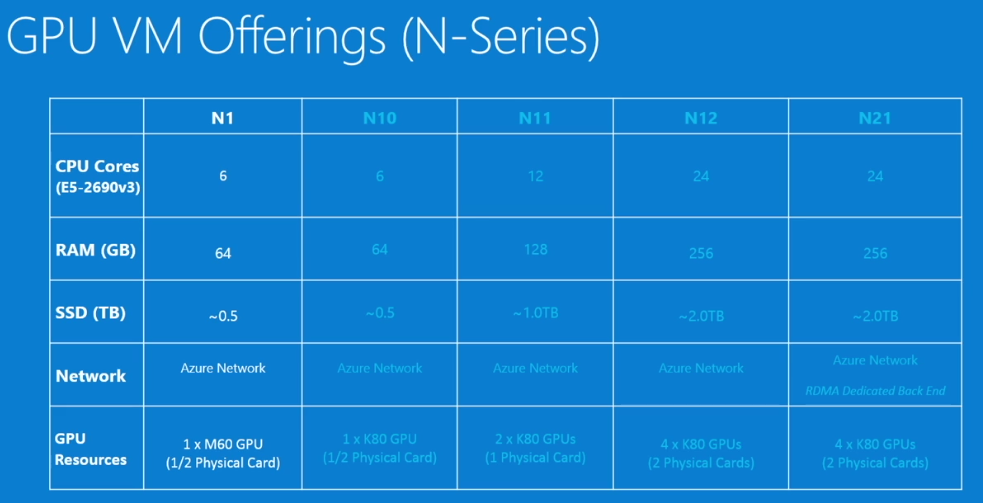At AzureCon, Microsoft announced that they were partnering with Nvidia in order to deliver their GRID 2.0 architetucture on Azure. This will allow customers to easily access heavy GPU power within Microsoft Azure, and this is then most likely like other virtual machines in Azure be available at pr minute cost.
This NVIDIA grid architecture will be available for both Linux and Windows virtual machines and be available in a custom machine series called N-series

Microsoft is uses DDA (Pass-trough) which is a feature that Microsoft does not have available within their Windows Server version with RemoteFX. My guess is the N1 & N10 series is basically using RemoteFX and splitting the memory into 2 slots.
So does this mean that Microsoft is moving toward with GPU passtrough on regular Windows Server as well? Hope so!
Microsoft also mentioned that is being available on CLIENT OPERATING SYSTEM, does this mean VDI is coming on Azure?This is not available as of now, but will be coming in preview later this year.
So if you plan on delivering GPU capable terminal server based computing in Azure, you need to compentace for the latency and the support catapabilities of the remote display protocol. Hence you should look into Citrix and the latest achivements they have with Framehawk & HDX and that Netscaler is now available in Azure, go figure.






